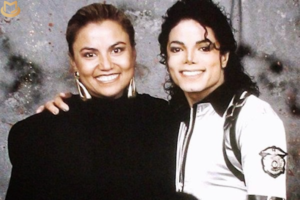In the spring of 2025, the Grand Palais Éphémère in Paris became the host of a gravity-defying installation that managed to stop both traffic and thought: “You know who I am,” a 20-meter-high rainbow-colored ladder that leaned precariously—yet confidently—against the neoclassical façade of the Grand Palais. It is the latest dreamlike manifestation by the Italian artist Paola Pivi, whose body of work continues to distort the possible, destabilize the real, and beckon us toward childlike wonder wrapped in conceptual sophistication.
This was not just a stunt. Nor was it an oversized pop sculpture simply meant for selfies and Instagram. Instead, Pivi’s technicolor ladder has emerged as a potent icon of aspiration, transformation, and suspension—metaphysical as much as physical. To understand what this artwork means, and why it matters, we must walk back through the artist’s restless trajectory and her insistence on occupying the intersection of the absurd, the elegant, and the ineffable.
PAOLA PIVI: THE ARTIST OF “WHAT IF?”
Born in Milan in 1971, Paola Pivi defies categorization. Trained in engineering, sculptor by practice, surrealist by spirit, she has been surprising the international art world since the late 1990s. Her works often sit somewhere between performance, installation, sculpture, and optical illusion. Early acclaim came after she won the Golden Lion at the 1999 Venice Biennale, and ever since, she’s been one of the few contemporary artists whose oeuvre is driven less by political statements and more by poetic perplexity.
Her art consistently asks, “What if?” What if a plane were flipped upside down (as in her 1999 piece Untitled (airplane)), or a zebra walked across the Himalayas (Zebras, 2003)? What if polar bears were rainbow-colored (I Want It All, 2012)? And now: what if a rainbow ladder climbed a historic French palace?
But these are not whimsical absurdities—they are deliberate challenges to perceptual limits and cultural conventions. Pivi’s work reflects a deeper tension between the tangible and the fantastic, often employing unexpected juxtapositions that blur the line between the physical world and psychological dreamspace.
THE GRAND PALAIS LADDER: DESCRIPTION AND CONTEXT
The 20-meter technicolor ladder presented in Paris—both a literal and symbolic elevation—is deceptively simple in structure. Constructed from aluminum, reinforced steel, and a sheathing of iridescent paints that catch the changing Parisian light throughout the day, the ladder is fixed at an angle impossible to climb. It rests not on the floor but rises from the lawn, leaning directly against the southern side of the Grand Palais’ colonnade, appearing to both defy gravity and integrate with the architecture.
Each rung is painted a different hue, echoing the gradient of a full rainbow. In certain light, it shimmers like stained glass; in the rain, it appears to melt into a dream. At dusk, it resembles a Jacob’s Ladder stretching into an invisible celestial realm.
Pivi’s ladder does not lead to a destination. It terminates somewhere in the sky—a gesture that beckons but denies. Viewers have described a strange blend of feelings in its presence: awe, nostalgia, vertigo, curiosity. The ladder becomes a prompt: climb, dream, fall, or ascend?
HISTORICAL CONTEXT: LADDERS IN ART, ASCENSION IN SYMBOL
The ladder, as both symbol and structure, has deep roots in human culture. In Christian iconography, the “ladder to heaven” represents spiritual ascension and divine union—most famously seen in Jacob’s dream in the Book of Genesis. In Tibetan Buddhist thangka paintings, ladders and stairways often represent stages of enlightenment. In medieval alchemical texts, the ladder is a metaphor for transformation of base matter into gold, and of human nature into divinity.
Artists have long drawn from this imagery. Marcel Duchamp’s Tu m’ (1918) included a painted ladder as a symbol of frustration with the limits of representation. Later, Joseph Beuys’ performances often featured ascents, falls, and flights as allegories for spiritual and societal healing. More recently, artists like Olafur Eliasson have used vertical and spatial constructions to interrogate perspective and perception.
Pivi’s ladder nods to all of these traditions while abandoning overt spiritualism. It’s secular, playful, but no less transcendent. It flirts with the absurd, but also with profound longing.
CONTEMPORARY RELEVANCE: CLIMBING IN AN UNCERTAIN AGE
Placed in today’s global context, the ladder takes on even more resonance. In an age marked by climate anxiety, economic disparity, digital distraction, and collective psychological fatigue, the image of ascension feels increasingly metaphorical. Who climbs now? And where to?
The ladder can be read as a monument to impossible aspirations—a capitalist critique of how success is promised but out of reach. Or it can represent hope—a fragile, beautiful gesture toward possibility. That ambiguity is central to Pivi’s practice: her works hold space for both interpretation and contradiction.
In recent years, many public artworks have leaned into overt social critique. Pivi’s ladder, by contrast, functions on the level of the mythic. It doesn’t shout a message; it whispers an invitation.
MATERIALITY AND ENGINEERING
From a technical standpoint, the ladder is a feat of design. Engineered in collaboration with a team of Italian architects and fabricators, it required special permits to be installed on the historic Grand Palais structure. The aluminum was sourced from recycled industrial scaffolding, then cut, polished, and painted in gradient chromatic lacquer. Each rung is load-tested, even though the ladder is not meant to be climbed—a subtle tension between form and function.
Invisible supports anchor it both underground and at the contact point on the palace. Viewers often ask: Is it real? That question—about both physicality and intent—is part of the work’s power.
The use of industrial materials mimics the language of urban development, construction, and labor—recontextualized into aesthetic reverie.
INTERACTIVITY, PUBLIC ART, AND RECEPTION
Installed as part of a broader 2025 Paris Art Week initiative, Pivi’s ladder was positioned outdoors and freely accessible. Crowds gathered daily to gaze upward, take photos, and speculate. Children attempted to touch the lowest rung. Tourists snapped it against the Eiffel Tower’s silhouette in the background. Influencers loved its surreal palette. But deeper reactions also emerged—especially at night, when lights at the base illuminated the ladder like a beacon in the dark.
Critics have responded with warmth and curiosity. In Le Monde, one writer called it “a bridge between the city’s grounded past and its dreamlike future.” The New York Times suggested it was “the most honest metaphor for human ambition since Brâncuși’s Endless Column.”
Importantly, Pivi’s ladder seems to restore a sense of innocence and mystery to public art, a genre increasingly politicized or institutionalized.
TOWARD A PHILOSOPHY OF THE IMPOSSIBLE
Pivi is not a philosopher—but her work often poses philosophical questions. The ladder is an emblem of the “impossible object”: something that exists not to be used but to be thought about. Like Magritte’s Ceci n’est pas une pipe, it disorients utility. It plays in the tension between symbol and substance, form and function.
In an era when visual culture is consumed in seconds, Pivi slows the viewer down. Her ladder is not about instant gratification. It demands that one stop, tilt the head, and look up. It asks the question: what does it mean to desire something just out of reach?
PIVI IN CONTEXT: FROM BEARS TO LADDERS
This installation is the culmination of Pivi’s lifelong exploration of elevation, absurdity, and transformation. It builds on her previous works in scale, color, and poetic energy. The rainbow bears of I Want It All (2012–2018) made the impossible friendly. Her inverted plane in Untitled (airplane) offered surreal defiance of physics. But the ladder, in its simplicity, may be her most evocative and complete work to date.
It also demonstrates her evolution—from playful provocateur to a more contemplative visual poet. And yet, she never abandons her childlike gaze. She merely aims it upward.
Ideologue
Paola Pivi’s technicolor ladder doesn’t lead anywhere. Or maybe it leads everywhere.
It stands as a radical proposal in a jaded world: that we are still allowed to hope, still permitted to dream, still capable of being astonished. It is a reminder that, sometimes, the most meaningful journeys are the ones that never quite begin.
As we face an uncertain future—politically, environmentally, culturally—it’s works like Pivi’s that reorient our vision not horizontally but vertically. She doesn’t give us a destination. She gives us the question.
And that, perhaps, is the highest form of art.
No comments yet.








